- Home
- Andrew McGahan
The Rich Man’s House
The Rich Man’s House Read online
PRAISE FOR
PRAISE
Winner, The Australian/Vogel’s Literary Award, 1991
Winner, Commonwealth Writers’ Prize for Best First Book (Pacific Region), 1992
Shortlisted, Victorian Premier’s Literary Award, 1992
Shortlisted, Adelaide Festival Award for Literature, 1992
Shortlisted, Canada–Australia Literary Award, 1992
‘McGahan’s book is a bracing slap in the face to conventional platitudes and hypocrises.’ Weekend Australian
‘Candid and unembarrassed, McGahan’s work throbs with an intensity.’ New Zealand Herald
‘Praise is one of those books that takes a hefty bite out of a piece of subject matter, chews it to a pulp and then spits it out.’ Peter Craven
‘McGahan’s gritty, unflinching Praise is one of few Australian novels of the 90s that really matter.’ David Marr
‘A tour-de-force revelation of life in the slow lane of drugs and sex and alcohol.’ Weekend Australian
PRAISE FOR
1988
‘A fiendish and eventful psychological novel … hugely satisfying.’ New York Times Book Review
‘The pre-eminent Australian road novel.’ The Australian
‘Untamed and frankly shocking. When 1988 is dismissed as “another” young man’s angsting book by reviewers deaf to the stylistic magic of this book, it makes the joke even funnier.’ The Age
PRAISE FOR
LAST DRINKS
Winner, Ned Kelly Award for Australian Crime Writing, 2001
Shortlisted, The Age Book of the Year Award, 2001
Shortlisted, The Courier Mail Book of the Year, 2001
‘Andrew McGahan’s genre-busting Last Drinks is my pick of the year.’ John Birmingham, The Age
‘Last Drinks, fast moving, funny and shocking, is a lament for all that can go wrong not only in the life of one man, but in the life of an entire state. This is crime fiction that transcends the genre. It’s a truly compelling and stylish novel, seamlessly written.’ Debra Adelaide, Sydney Morning Herald
‘Wrestles with problems like love, addiction, hate and faith; and with conflicts of the heart, politics and pain. This is territory you might think belonged in books like Power without Glory and Brighton Rock.’ Michael Shuttleworth, Bookseller and Publisher
PRAISE FOR
THE WHITE EARTH
Winner, The Miles Franklin Literary Award, 2005
Winner, The Commonwealth Writers’ Prize (South East Asia and South Pacific Region), 2005
Winner, National Year of Reading 2012, Queensland
Winner, The Age Book of the Year (Fiction), 2004
Winner, The Courier Mail Book of the Year Award, 2004
Shortlisted, Queensland Premier’s Literary Award, 2004
Shortlisted, Festival Awards for Literature (SA) Award for Fiction, 2006
Longlisted, International IMPAC Dublin Literary Award, 2005
‘The glue that holds it all together is McGahan’s tremendous narrative skill. The White Earth is a long book, but there is nothing sprawling about it. A lean, intelligent and incisive novel.’ James Ley, Sydney Morning Herald
‘The novel is beautifully structured, filled with parallels and reverberations which come back to haunt and illuminate the reader as the story unfolds.’ Katharine England, Adelaide Advertiser
‘A great Australian story embracing national themes that should engage us all.’ Lucy Clark, Sunday Telegraph
‘Impressive … A well-wrought, meditative reflection on Australia’s colonialist demons.’ Publishers Weekly
‘The contemporary setting notwithstanding, these characters have a timeless quality and could have stepped from the pages of a Dickens novel.’ The Age
PRAISE FOR
UNDER GROUND
Shortlisted, Queensland Premier’s Literary Award, 2007
Shortlisted, Best Science Fiction Novel, Aurealis Awards, 2006
‘A corker of a book. On the surface it’s a tense, engaging political thriller, but there is no hiding from its articulate critique of Australian society.’ Herald Sun
‘A delicious romp through an Australia both familiar and deeply disturbing.’ Courier Mail
‘A fast-moving and sometimes outrageous action-adventure novel … It is, without doubt, McGahan’s most nakedly political work so far.’ Sydney Morning Herald
PRAISE FOR
WONDERS OF A GODLESS WORLD
Winner, Best Science Fiction Novel, Aurealis Awards, 2009
‘The writing is as taut as strung nerves, its grip like that of a madman intent on taking you to the nightmare of the end of the world … an extraordinary high-wire act.’ Courier Mail
‘… the writing rises to invigorating heights, bringing us into the very midst of a thunderstorm through an intriguing combination of scientific description and a kind of magic realism.’ Sunday Tasmanian
‘Astounding … Wonders of a Godless World veers grippingly from the sublime to the miraculous … it is a spellbinding, lunatic, supernatural opera.’ Sydney Morning Herald
‘A fable, an allegory, an exploration of the innermost secrets of both the universe and the mind. Andrew McGahan has once again proved himself to be a chameleon of storytelling with his latest book, Wonders of a Godless World, itself a wonder of imagination and discovery. McGahan is a conjuror—this magical tale of the orphan and the foreigner is utterly original and has its own confounding logic as it hurtles the reader to the edge of the universe and beyond. This is a book whose questions and propositions echo long after its final pages are read.’ Books and Publishing
ANDREW MCGAHAN was born in Dalby, Queensland, and died in Victoria in 2019 at age fifty-two. His first novel Praise (1992) won the 1991 The Australian/Vogel’s Literary Award and the regional prize for best first book in the Commonwealth Writers’ Prize. His second novel was the prequel 1988 (1995), and his third novel Last Drinks (2000) was shortlisted for multiple awards, including The Age Book of the Year and The Courier Mail Book of the Year Award, and won a Ned Kelly Award for Crime Writing. In 2004, The White Earth was published and won the 2005 Miles Franklin Literary Award, the Commonwealth Writers’ Prize for the South East Asia and South Pacific Region, The Age Book of the Year (Fiction) and The Courier Mail Book of the Year Award. It was also shortlisted for the Queensland Premier’s Literary Award for fiction. McGahan’s fifth novel, Underground, was published in 2006 and was shortlisted in the Queensland Premier’s Literary Award for fiction and for the Aurealis Award. In 2009, Wonders of a Godless World was published to acclaim and won the Aurealis Award. McGahan’s award-winning writing also includes stage plays and the screenplay for the movie version of Praise.
This is a work of fiction. Names, characters, organisations, places and incidents either are the product of the author’s imagination or are used fictitiously, and any resemblance to actual persons, living or dead, business establishments, events or locales is entirely coincidental.
First published in 2019
Copyright © Andrew McGahan 2019
All rights reserved. No part of this book may be reproduced or transmitted in any form or by any means, electronic or mechanical, including photocopying, recording or by any information storage and retrieval system, without prior permission in writing from the publisher. The Australian Copyright Act 1968 (the Act) allows a maximum of one chapter or 10 per cent of this book, whichever is the greater, to be photocopied by any educational institution for its educational purposes provided that the educational institution (or body that administers it) has given a remuneration notice to the Copyright Agency (Australia) under the Act.
Kind permission received from Faber and Faber Ltd to quote from ‘The Wasteland’ by T.S. Eliot on p. 347.
Allen & Unwin
83 Alexander Street
Crows Nest NSW 2065
Australia
Phone: (61 2) 8425 0100
Email: [email protected]
Web: www.allenandunwin.com
ISBN 978 1 76052 982 6
eISBN 978 1 76087 217 5
Internal design by Sandy Cull, gogoGingko
Set by Bookhouse, Sydney
Cover design: Sandy Cull, www.sandycull.com
Cover image: © Phongskorn Supakankumorn / Alamy Stock Photo
FOR LIESJE
▲
AUTHOR’S NOTE
This is my last book.
An author can’t always say that with certainty, but as I’m in the final stages of dying as I type this, it seems a safe bet. It’s a finished novel—I wouldn’t be letting it out into the world if it wasn’t—but I can’t deny that my abrupt decline in health has forced the publishers and I to hurry the rewriting and editing process extremely, and that this is not quite the book it would have been had cancer not intervened. That doesn’t help with any flaws you might find in the story, but it might explain them, and for once I can fairly plead—I was really going to fix that!
CONTENTS
PROLOGUE 1
PROLOGUE 2
BOOK ONE
1 A FUNERAL
2 DEPORTED
3 AN INVITATION
4 HOW THE WHEEL GOT ITS NAME
5 ARRIVAL
6 RICHMAN UNAUTHORISED
7 ALIGHTING
8 THEORIES OF DESIGN
9 THE TOUR
10 ABOUT THE HAND OF GOD
11 INTRODUCTIONS
12 HOLY BRIBES
13 OVER CIGARS
14 NOT A MOUNTAIN
15 THE LIGHTNING ROOM
BOOK TWO
1 THE PROMISE
2 LUXURIATING
3 FALLING MAN
4 DEATH AND ART
5 THE QUESTION OF PRESSURE
6 ENTERTAINMENTS
7 THE THEORY OF PRESENCES
8 PREMONITIONS
9 THE STORMS OF THE WHEEL
10 ON THE BRINK
11 THE SMALLEST OF THE BIG
12 THE RED WHEEL
BOOK THREE
1 THE LA FLIGHT
2 TAKING STOCK
3 THE THIRD MAN FACTOR
4 WAITING
5 PRIESTESS
BOOK FOUR
1 ONE DOWN
2 THE STAIRS
3 ON THE TERRACE
4 THE RITUAL
5 MEDICATIONS
6 THE WITCHING HOUR
7 ALONE
8 THE VOICE OF GOD
9 THE UPPER STAIRS
10 THE LOWER STAIRS
11 THE BOTTOM
EPILOGUE 1
EPILOGUE 2
PROLOGUE 1
Introduction from The Cloven Sky—A History,
Roger Fitzgerald, 1991
Dutch master-seaman and ocean-going explorer Gerrit Jansz, born 1605, was very nearly one of those unfortunates whom history overlooks.
For centuries, indeed, it did overlook him, robbing him of the honours usually granted to mariners who make great discoveries: first, the fame of the discovery itself, and second, the right to name the new landmark, be it a river, or a strait—or, in this case, an island.
Or more to the point, a mountain.
Instead, for many years, the fame of discovering the Wheel went to French sea-captain Marion du Fresne, who, in 1772, driven by bad weather to the south of the then barely known isle of Tasmania, happened upon the great massif rearing in all its solitude.
Then again, du Fresne himself can also be considered cheated by history, for although he named the mountain, the name he chose never stuck. The actual name can be traced instead to the English navigator and explorer, James Cook, who visited the massif five years after the Frenchman. Cook did not rename the mountain, respecting du Fresne’s claim, but all the same it was Cook’s journals, published after his death, and containing a crucial printer’s error, which gave the mountain the peculiar title by which it has been known ever since.
English and French historians debate whom is really owed the credit, Cook or du Fresne, but the truth is that Gerrit Jansz beheld the Wheel long before either of them, well over a century earlier in fact—in 1642. And yet a combination of self-doubt, politics and bad luck conspired to keep his discovery a secret for another three hundred years.
▲
So, who was Gerrit Jansz?
Very little is known about the man; his place of birth, his earlier life, are all a mystery. He was a seafarer in an age of seafaring, and until 1974, if he was remembered at all it was not for any deed of his own, but merely for being a senior member of an expedition led by the far more famous mariner and explorer, Abel Tasman.
The expedition in question was a voyage to explore and map the coastline of Australia. Not that such a country then existed, the landmass was instead known variably as Terra Australis, or the Great Southern Land, or later New Holland. In 1642, its shores were mainly a matter of guesswork on world charts, so the Dutch Council of the Indies dispatched Tasman to correct this failing.
His fleet consisted of two vessels. One was the flagship Heemskerck, a war-yacht of one hundred and twenty tons, upon which Tasman himself and navigator Frans Visscher resided. The other was the Zeehaen, a fluyt (or transport ship) of two hundred tons, upon which the most important figure was the influential merchant and draughtsman Isaac Gilsemans. All three of these men would emerge with renown from the voyage. Remembered more rarely was the fact that the Zeehaen was captained not by Gilsemans, but by a master named Gerrit Jansz.
Jansz is listed on the expedition’s roster as being thirty-seven years old, and ‘of Batavia’, which is now Jakarta. There is nothing else. His captain’s log of the voyage with Tasman survives, but it is a technical document and mentions little of his private life. It can be inferred, however, that he had worked largely in the Dutch East Indies (present day Indonesia) before being selected to captain the Zeehaen, and that he was a keen amateur geologist and mathematician.
But it is with the log of the Zeehaen that the quirks of history began to conspire against Jansz. Had that log been published and widely read as soon as the fleet returned home, the full import of certain passages within might have become apparent. However, the log was not Jansz’s property—as neither were those of Tasman, Visscher and Gilsemans. All such records belonged to the Council of the Indies, who had commissioned the voyage, and their prime interest was not to publicise the expedition’s findings. Rather, the findings were confidential information to be used by the Council to advance Dutch trade and influence.
Official secrets, in other words.
Hence, reports were slow to be released. In time, however, Tasman, Visscher and Gilsemans all published accounts of the voyage that earned each of them varying degrees of fame. Jansz published nothing, and his log faded quickly into obscurity, as did the man himself.
Yet oddly enough, it would turn out that Jansz’s log was the only original document of the voyage that would survive to the modern day. The other logs have all been lost, but Jansz’s was rediscovered by Dutch historians in 1973, filed inexplicably amid a collection of ancient shipyard schematics, but in good condition. Finally, scholars could read the document in full, and what they found there astonished them.
Even then, history was reluctant to embrace Jansz, for when the news was released to the world in early 1974, it was immediately declared that the log must be a fraud, a hoax. It was just too timely, too convenient, given what was taking place on the Wheel at that moment.
The log was quite real, however.
And it changed everything.
▲
The accepted history was this.
Abel Tasman’s expedition set out from Batavia on August 14, 1642, and first sailed west to Mauritius and thence south to catch the roaring forties, which then bore them east again, in search of lan
d. Mistakenly assuming that the bulk of Terra Australis lay further south than it actually does, Tasman aimed to sail along a latitude line of more than fifty degrees. Striking poor weather, however, he turned further north: luckily, or he would have missed even Australia’s southernmost point, the great island that would later bear his name, Tasmania.
But that was yet to come. For now, a string of storms struck the fleet—it was late spring in the southern hemisphere, but the weather in the Southern Ocean can turn foul at any time of the year—and on a dark night the two ships became separated. The Heemskerck under Tasman managed to hold its course to the east, but the Zeehaen, under Jansz, was forced further south once more. It was a full six days before the gales cleared, and Jansz could turn his ship safely north again.
Tasman, in the meantime, had made his great discovery by sighting a wild and rugged land: the west coast of Tasmania. He was worried about the disappearance of the Zeehaen, but trusted that Jansz would make his way east eventually, and so got on with exploring the new shore. And indeed, ten days after it had vanished, the Zeehaen at last reappeared, riding up unharmed from the south-west.
After much celebration (and the naming of a nearby inlet as Reunion Bay) the fleet spent a further four days in Tasmanian waters, mapping the island’s western and southern shores. They then launched off eastwards into the Pacific to make further discoveries, New Zealand among them. In time, Tasman would return by a northern route to his beginning point in Batavia, having sailed fully around the Australian mainland without actually ever sighting it. But he had at least thereby proved that the Great Southern Land was a freestanding continent.
Such was the accepted history—until Jansz’s log was discovered. Before then, no account had ever been given of the Zeehaen’s ten days alone upon the southern sea. It was assumed by historians that nothing of importance had occurred in that time. But something had, even if no one at the time, not even Jansz himself, realised it.
For their first six days alone, the log reports (laconically, in Jansz’s native seventeenth-century Dutch, only the gist of which will be given here) that the Zeehaen battled wind and wave, driven always either to the south or the south-east. In all that time, scarcely a scrap of blue sky was seen. But on the sixth night the gales calmed and the clouds blew away, and on the seventh morning there came a clear sunrise.

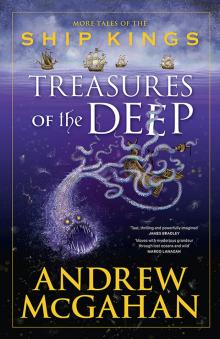 Treasures of the Deep
Treasures of the Deep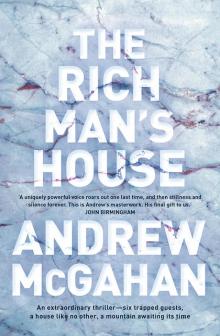 The Rich Man’s House
The Rich Man’s House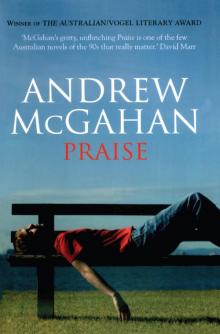 Praise
Praise The White Earth
The White Earth 1988
1988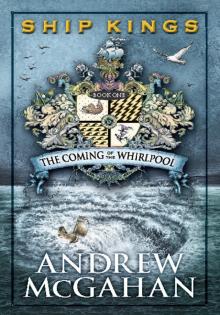 The Coming of the Whirlpool
The Coming of the Whirlpool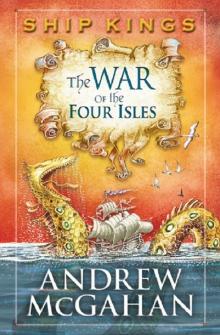 The War of the Four Isles
The War of the Four Isles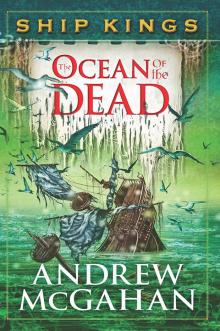 The Ocean of the Dead: Ship Kings 4
The Ocean of the Dead: Ship Kings 4 Last Drinks
Last Drinks Wonders of a Godless World
Wonders of a Godless World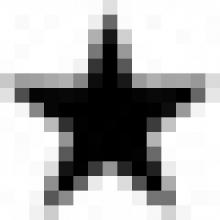 Underground
Underground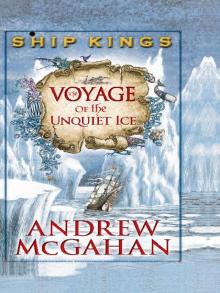 The Voyage of the Unquiet Ice
The Voyage of the Unquiet Ice